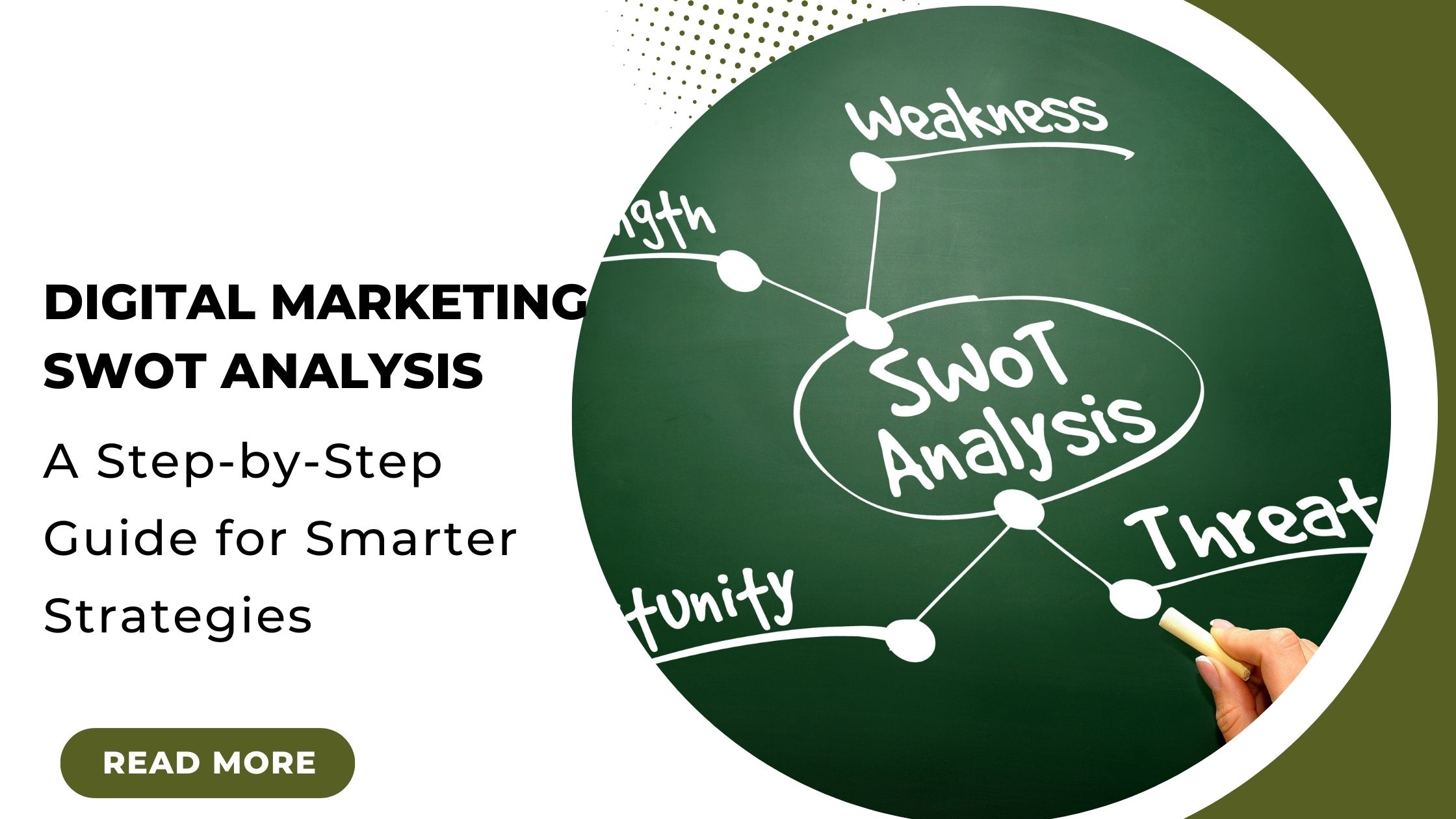Digital Marketing SWOT Analysis: A Step-by-Step Guide for Smarter Strategies
When it comes to developing a successful digital marketing strategy, understanding your company’s strengths, weaknesses, opportunities, and threats (SWOT) is essential. A SWOT analysis allows you to identify and analyze these key factors, which can help you make need to constantly churn out content businesses face an ever-evolving array of challenges and opportunities. To navigate this complexity, a structured approach can make all the difference. Enter SWOT analysis—a powerful tool that helps marketers assess their internal strengths and weaknesses while also evaluating external opportunities and threats.
Understanding your position in the market is crucial for crafting effective strategies. By conducting a Digital Marketing SWOT Analysis, you can uncover insights that guide your marketing efforts towards success. Whether you’re a startup or an established brand, leveraging this framework will enhance your decision-making process and ensure you’re not just reacting to trends but proactively shaping them.
Ready to dive deep into each component of SWOT? Let’s explore how you can harness these insights for smarter digital marketing strategies!
Understanding the Four Components of SWOT
SWOT analysis is a powerful tool that allows businesses to evaluate their position in the market. It consists of four key components: Strengths, Weaknesses, Opportunities, and Threats.
Strengths highlight what your business does well. This may include unique offerings or exceptional customer service. Identifying these can help you leverage them for growth.
Weaknesses focus on areas needing improvement. Recognizing limitations can lead to actionable strategies for enhancement. It’s essential to confront these honestly.
Opportunities represent potential avenues for expansion or innovation. Scanning the market can uncover trends that align with your brand’s mission and capabilities.
Threats are external factors that could impact your success negatively. These might include competitors or changes in regulations. Understanding threats helps mitigate risks effectively as you develop your marketing strategy.
Together, these four Step-by-Step Guide for Conducting a Digital Marketing SWOT Analysis components provide a comprehensive overview of your business and its position in the market. By analyzing each element, you can identify areas of strength to capitalize on, weaknesses to address, potential opportunities for growth, and threats to mitigate. This information can then inform your decision-making and help you develop a strategic plan for your business’s future success. Ultimately, SWOT analysis is a valuable tool for businesses looking to stay competitive and adapt to changing market conditions.
Strengths: Identifying Your Unique Selling Points and Competitive Advantages
To succeed in digital marketing, recognizing your strengths is essential. Your unique selling points (USPs) set you apart from the competition.
Consider what makes your products or services special. Is it superior quality? Exceptional customer service? Or perhaps innovative features that no one else offers?
Evaluate feedback from customers to gain insight into what they value most about your brand. This understanding can reveal hidden advantages.
Additionally, analyze competitor offerings to pinpoint gaps in their strategies. Identify areas where you excel and leverage them to create compelling campaigns.
Your competitive advantages are not just assets; they are springboards for growth. Use these insights to craft messages that resonate with your audience and elevate your brand presence in a crowded marketplace.
Weaknesses: Acknowledging Areas for Improvement and Addressing Limitations
Acknowledging weaknesses is crucial for any digital marketing strategy. It’s about getting real with yourself and your business. Take a hard look at what isn’t working.
Is your website slow? Are you not utilizing social media effectively? These are just a few examples of areas that can hinder growth.
Being aware of limitations helps in prioritizing improvements. Perhaps there’s a lack of skilled personnel on your team or underutilized tools that could enhance efficiency.
Instead of shying away from these issues, embrace them as opportunities to grow stronger. Addressing weaknesses head-on creates pathways to innovation and better practices.
Consider conducting surveys or seeking customer feedback to identify blind spots. This external perspective can illuminate areas needing attention, guiding you toward meaningful enhancements in your digital marketing efforts.
Opportunities: Finding New Avenues for Growth and Expansion
Opportunities in digital marketing can emerge from various sources. Keeping a close eye on industry trends is essential. New technologies, changing consumer behaviors, and evolving platforms often create fresh possibilities.
Embracing emerging tools like AI or automation can enhance your strategies significantly. These innovations allow for more efficient targeting and personalized experiences that resonate with users.
Another area to explore is the rise of social media channels. Platforms like TikTok and Instagram continue to grow rapidly, attracting diverse audiences. Engaging with these communities opens doors to connect with potential customers in unique ways.
Additionally, collaborations through partnerships or influencer marketing can expand your reach quickly. Leveraging others’ audiences while providing value creates a win-win scenario for both parties involved.
Don’t overlook local markets or niche segments within your industry. Focusing on underserved areas might yield surprising results as you tailor offerings specifically to their needs.
Threats: Analyzing External Factors That Could Impact Your Business
Identifying threats in your Digital Marketing SWOT Analysis is crucial. These external factors can significantly affect your business landscape.
Start by evaluating competitor activities. New and agile entrants might disrupt your market share or innovate faster than you can adapt.
Regulatory changes are another concern. Laws regarding data privacy, advertising standards, and consumer rights evolve frequently. Staying compliant is not just necessary; it’s vital for reputation management.
Economic shifts can also pose a threat. Changes in consumer spending habits often ripple through industries, affecting demand for your products or services.
Technological advancements should not be overlooked. Failing to keep up with new tools or platforms could leave you behind while competitors engage audiences more effectively.
Recognizing these threats enables proactive planning and strategic adjustments that safeguard your business longevity.
Implementing Strategies Based on SWOT Analysis Findings
Implementing strategies from your Digital Marketing SWOT Analysis is where the magic happens. Start by prioritizing the insights you’ve gathered. Focus on strengths that can be leveraged immediately.
Next, address weaknesses head-on. Develop actionable plans to improve or mitigate these areas. This proactive approach not only enhances performance but also builds confidence within your team.
Turn opportunities into action items. Investigate emerging trends and market demands that align with your capabilities. Experiment with new channels or tactics to capture growth potential.
Keep an eye on threats. Regularly review external factors affecting your industry and adjust your strategy accordingly. Stay flexible and ready to adapt as conditions change in the digital landscape.
This strategic implementation phase ensures you’re not just analyzing but actively enhancing your marketing efforts for better results.
Conclusion
When it comes to navigating the dynamic world of digital marketing, harnessing the power of a SWOT analysis can be transformative. By understanding your brand’s strengths, acknowledging weaknesses, exploring opportunities, and assessing threats, you position yourself for more informed decision-making.
This method not only illuminates where your business shines but also provides clarity on areas that require attention. It’s about crafting strategies that leverage unique selling points while being mindful of potential pitfalls.
As you implement strategies based on your findings, remember that this is an ongoing process. The digital landscape changes rapidly; staying agile will help ensure long-term success. Embrace the insights gained through your Digital Marketing SWOT Analysis to drive smarter strategies and foster sustainable growth in an ever-evolving marketplace.



